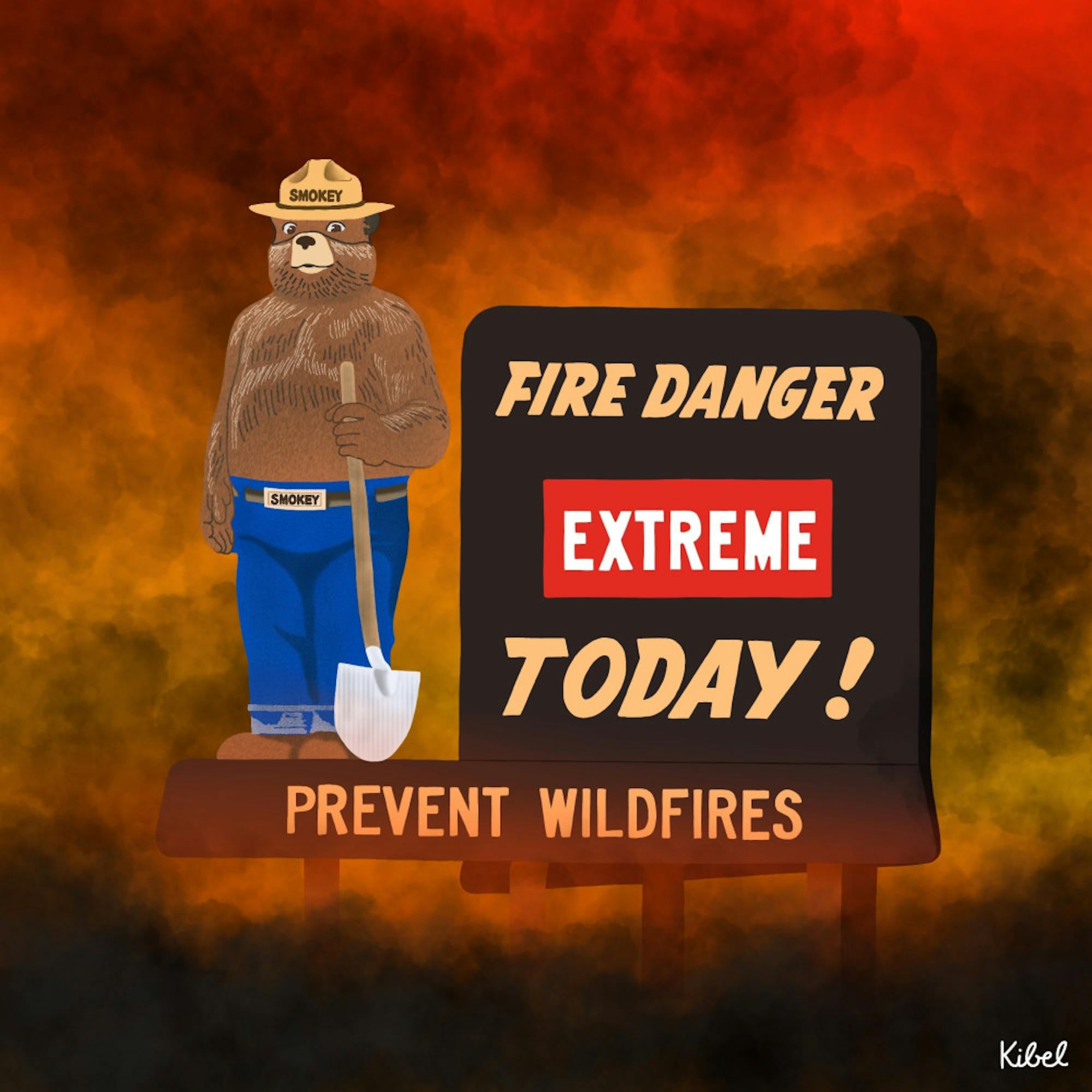Although January wildfires are a rare occurrence in California, the Big Sur region has recently faced another devastating fire.
After over a week of closures along the iconic Highway 1 and forced evacuations of residents, the Colorado wildfire is finally nearing containment. Though the 700 acres it burned seems — at face value — like a large area, it pales in comparison to other fires in recent years that have burned hundreds of thousands of acres, and even over a million in the case of the August Complex in 2020, the largest fire in California’s history. 2020 and 2021 have been the worst years in history for wildfires. In fact, 14 of the 20 largest wildfires have occurred in the last 10 years, and nine in the last two.
What has been termed “fire season” in California has been getting longer in recent years. Unseasonably warm spring seasons have caused earlier and faster snowmelt, with dry summer conditions where fires are most likely to spread setting in earlier. Wildfire season typically begins in July and runs through the first fall rainfall, peaking in September and October. However, recent decreases in fall precipitation have caused the fire season to extend into the winter as well. In fact, many people now consider California’s fire season to be yearlong.
What makes the Colorado wildfire particularly worrying is the fact that California has experienced heavy rainfall in the latter months of 2021, which brought many regions out of a state of extreme drought. However, 99% of the state is still experiencing moderate drought conditions, and the Colorado wildfire has made it clear that a period of rainfall will not ease the propensity to wildfires caused by the state's chronic drought.
Though the death counts caused by wildfires are relatively low, the structural and environmental toll gets higher every year. Countless people have been forced to flee as their homes and workplaces are reduced to dust, such as the residents of Paradise, CA, which was decimated by the Camp Fire in 2018 — the deadliest and most costly California fire.
Another important threat caused by these rampant fires is to California's giant sequoias. Giant sequoias grow on the western side of the Sierra Nevada in California and can live for thousands of years. Due to their naturally fire-resistant bark, they tend to persist through difficult conditions. However, the increased intensity of the recent mega fires in California has been killing unprecedented numbers of these rare giants, threatening their future. The Castle fire in 2020 killed10–14% of all naturally growing giant sequoias in the Sierra Nevada. Even these trees, renowned for their longevity and resilience, are now under threat from the deadly fires in California.
Former President Trump and others have claimed that forest mismanagement by California's government has been the cause of massive blazes in recent years. However, the state only owns 3% of California’s forest, with 58% owned by the federal government and the rest owned by private owners.
Instead, evidence shows that climate change has been the driving factor. Onestudy found that human-caused climate change doubled the amount of land damaged by wildfires in the western United States between 1985 and 2015. A 2021 heat wave set record-high temperatures across the region. The changed weather patterns have included an increase in dry, windy and hot days, all of which combine to create perfect conditions for wildfires.
California’s increasingly devastating wildfires are yet another result of the anthropogenic climate change that threatens humanity. Small individual gestures such as reducing plastic use and meat consumption make only a small dent in the mountainous problem, where 71% of emissions come from only 100 companies. The change we must make is bigger. Our individual impact can be increased not only by reducing individual emissions but by adding our voice to collective calls for change. Biden’s big climate measures are stuck in the Build Back Better Act due to partisan gridlock and disagreements over the magnitude of the situation. In order to push forward the kind of change that is necessary, we must be persistent and impress upon our government how important it is to pass these measures that will drastically reduce emissions in the U.S. Only by coming together can we reduce the deleterious effects of climate change in California, the U.S. and around the world.





